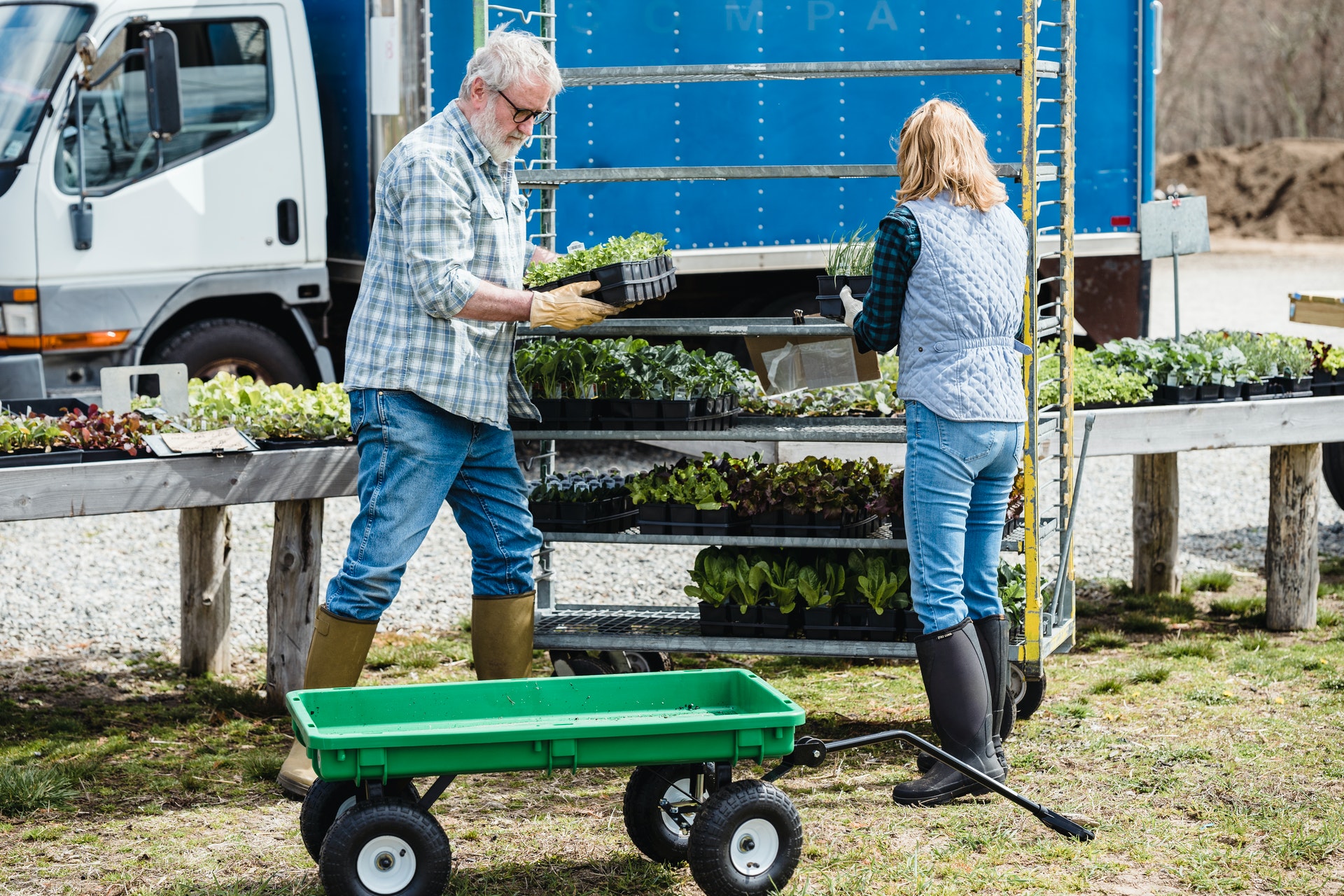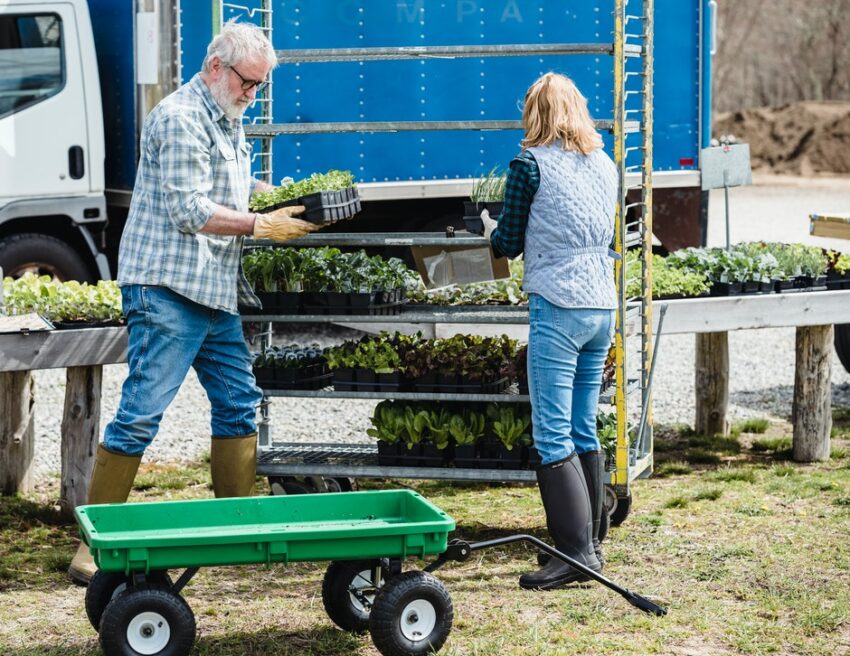The logistics of moving fresh produce is a complicated one that demands seamless and simultaneous functioning of the entire supply chain so as to ensure that the cargo reaches its destination in perfect condition. Fresh produce logistics takes into consideration many factors such as temperature, humidity, package selection, etc. to ensure the freshness of the products. Read on this blog to find out about the challenges of fresh produce logistics. Additionally, we have also included a few tips to help with the seamless transportation of this kind of cargo.

A bit about fresh produce shipments
Transporting fresh produce implies dealing with a risky supply chain. Moreover, the risk of decomposition is an additional problem to consider other than theft, or delay. Fresh food logistics is a highly specialized sub-sector of our industry as it involves a lot of effort to deliver the items within a limited time frame. It entails a lot of coordination among all the stakeholders of the project. The slightest delay in pickup or delivery could take a toll on the freshness of the cargo.
Additionally, companies dealing with fresh food shipments don’t get any wiggle room when it comes to safety. Most consumers make their purchase of fresh food from the stores based on the appearance of the items. Precisely for this reason, the forwarders need to ensure the overall freshness of the items during the time of delivery. The key to doing this properly is to plan the shipment well ahead of time.
Challenges of shipping fresh food
Every year millions of dollars are wasted as the food rots during its transit time. According to a study by Logistics Bureau, every year a whopping 33% of the fresh food shipments gets spoiled. Additionally, the food items spend over half their shelf life in the transit process. Some of the main reasons that lead to spoilage are enumerated below:
-
Humidity and temperature
The temperature and humidity have to be controlled to keep the cargo fresh during the entire shipping process. Moreover, refrigeration is crucial as the slightest increase in temperature could result in the growth of fungus and bacteria. It is equally important to remember the right temperature and humidity level for each kind of fresh food. For instance, oranges, cherries, grapes, and other fruits require a temperature of 0-2 degrees C with a humidity level of 95%-100%. However, items like onions and garlic require the same temperature but a lower humidity level.
Simply put, the temperature and humidity parameters for keeping the food safe are extremely cargo specific. The biggest challenge in these kinds of shipments is the lack of data that shippers can use to rectify the anomalies before time to prevent the rotting of the food. Reefer trucks are ideal for inland movements of both flowers and fresh produce.
-
Damaged packaging
Another common problem with fresh produce shipment is the food waste due to impact damages. For example, loading too many pallets on one truck for cost efficiency could lead to damaged goods. If the cargo gets damaged during the shipping process, consumers are not going to buy it. Shocks, vibrations, and other impacts during the transit process can damage the produce. This is why it is very important to pack the shipment properly and eliminate all chances of overloading.
-
Lack of visibility within the supply chain
Lack of data sharing among all the stakeholders of the shipment poses considerable challenges for shipping fresh food. This results in miscalculations in capacity planning, undependable forecasts, and lastly uncertainty. Therefore, a thorough idea about the products and their specific transportation requirement across the supply chain is vital. However, this is often impossible since the data are not properly shared. This often results in product damage or unnecessary delays.
-
High costs of maintenance
Right temperature conditions and quality packing are crucial for maintaining the freshness of this kind of cargo. However, this entails a lot of expenses making fresh produce logistics way more expensive than regular ones.
-
Issues relating to security and safety
Fresh food logistics require following lots of food safety regulations. These regulations include temperature, transportation, packaging recommendations, storage regulations, packaging facility hygiene, and more. Additionally, the trucks used for moving food products need to comply with ISO requirements. Not complying with one or more of these regulations could have serious financial as well as legal repercussions.
Tips to ensure seamless transportation of fresh produce shipments
One of the easiest ways to overcome the challenges of fresh food logistics is to establish a clear and seamless chain of communication throughout the entire supply chain. Moreover, the competition posed by the multinationals like Amazon Fresh, makes it imperative for small and independent forwarders to create a lean and controlled supply chain. Let a now take a look at a few tips to ensure stress-free fresh produce logistics.
-
Ensure data transparency
On average, 43 billion pounds of fresh foods are wasted every year. Food waste can be attributed to the lack of visibility within the supply chain. This is the biggest challenge for fresh food logistics. The slightest delay in transportation or even a minor temperature instability can drastically reduce the shelf life of the food. Moreover, a lack of data transparency also results in miscommunications between the sellers, retailers, and shippers. A continuous flow of data among all the stakeholders of the shipping process is the only way to overcome this challenge. Gathering end-to-end real-time data on package condition and inventory location can enhance transparency and result in better control across the supply chain.
-
Pay attention to the packaging
Selecting the right packaging is a crucial aspect of shipping fresh food. For instance, fruits like lemons, pears, or apples can withstand a long transportation time. However, fruits with soft skins like peaches, or plums need special care while packaging. Items like watermelon are moved in trays, while cucumbers and onions are moved in crates. Simply put, freight forwarders specialized in the transportation of fresh food need to know the packaging requirements for all kinds of fresh produces. Moreover, it is equally important to be mindful of other factors like humidity levels and temperature changes.
-
Do not ship all fresh food together
It is important to keep in mind that some foods cannot be moved together. This is because most fruits and vegetables release a gas called ethylene on harvesting. However, the quantity of gas released varies from fruit to fruit. Ethylene causes some items like peppers and tomatoes to ripen quickly. Quick ripening results in quick spoilage. Therefore, foods that release this gas in large quantities should be kept separated.
-
Optimize maintenance
Maintaining the reefers goes a long way to ensure the freshness of the items being transported. This is why it is vital to regularly maintain and clean the vehicles. Moreover, before loading the cargo, the trucks and even the cartons need an inspection to check for dirt, odour, or fungus. Lastly, it needs to be checked that the cargo moved in the vehicle previously didn’t pose a contamination risk. For instance, a truck that has recently moved meat or poultry needs special cleaning. Otherwise, it could contaminate the fresh produce. Well-supervised maintenance measures lower the overall maintenance expense and also ensure the freshness of the cargo.


